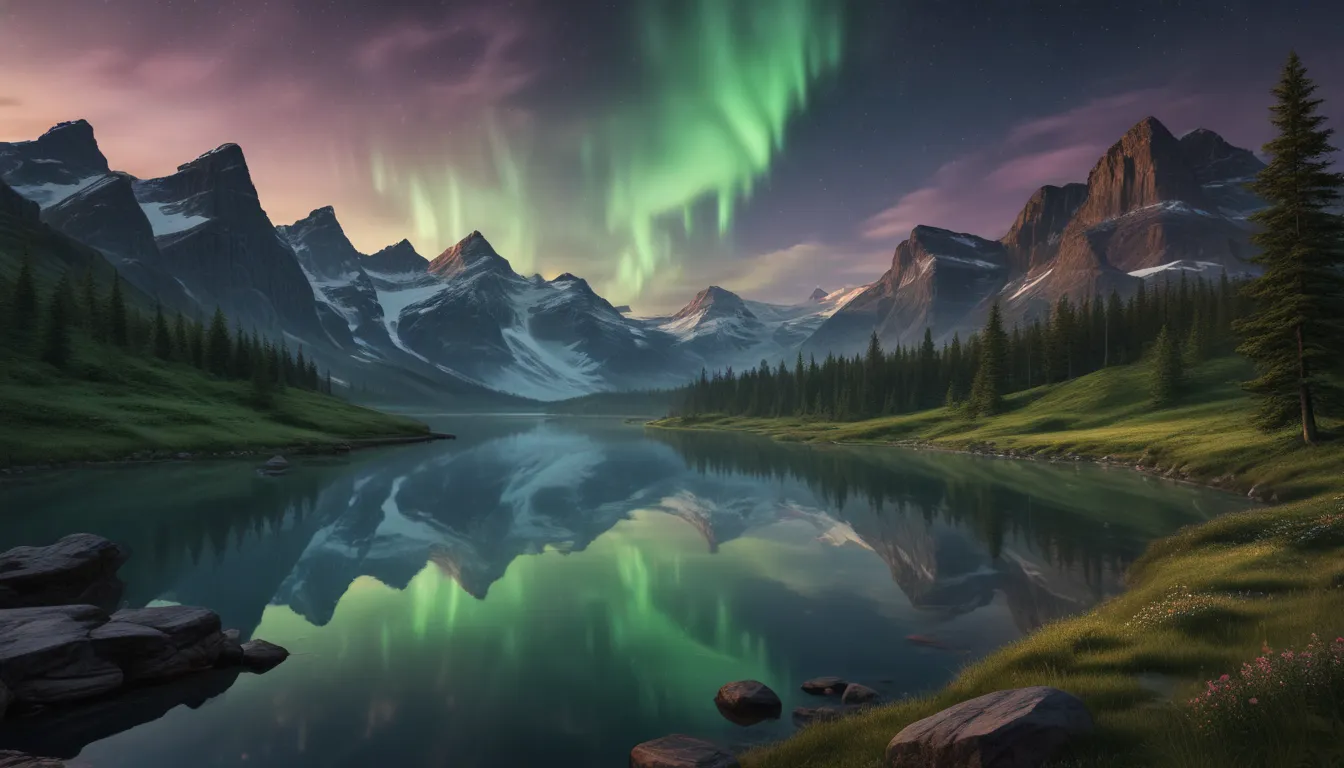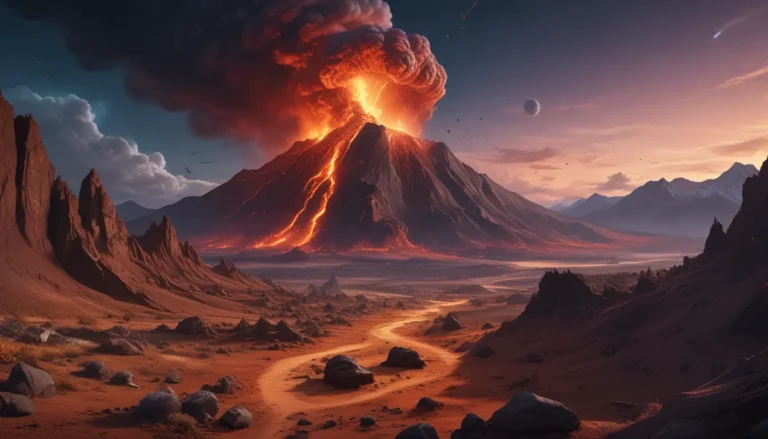The pictures we use in our articles might not show exactly what the words say. We choose these pictures to make you interested in reading more. The pictures work together with the words but don’t take their place. The words still tell you the important facts.
If you've ever gazed upon the mesmerizing dance of light in the sky known as the Aurora, you've experienced a phenomenon that has captivated human imagination for centuries. These celestial displays, also referred to as the Northern Lights and Southern Lights, are a result of the intricate interplay between Earth's magnetic field and charged particles from the Sun. While scientists have delved into the mechanics of auroras, there remains an air of mystique surrounding these awe-inspiring natural wonders.
Unlocking the Secrets of Aurora
Let's delve into 11 intriguing facts about auroras, shedding light on their origins, characteristics, and the legends that surround them. From the vivid colors they paint across the night sky to the mythical tales they inspire, auroras continue to astound and enchant us.
Understanding the Aurora Borealis and Aurora Australis
The Aurora Borealis, or Northern Lights, and the Aurora Australis, or Southern Lights, are ethereal celestial light displays that grace the polar regions of our planet. These captivating phenomena are born from the interplay between Earth's magnetic field and charged particles from the Sun.
The Colorful Symphony of the Aurora
One of the most striking features of the Aurora is its vibrant color palette. From hues of green and red to shades of yellow, blue, and even purple, the Aurora paints the sky with a mesmerizing spectrum. The specific colors visible depend on the gases present in the atmosphere and the altitude at which the particles interact with Earth's atmosphere.
Unveiling the Names
The names "Aurora Borealis" and "Aurora Australis" hold poetic significance. The former pays homage to the Roman goddess of dawn, Aurora, and the Greek word for the north wind, Boreas. Similarly, the latter is derived from Aurora and the Latin word for southern, Australis. These names echo the ethereal beauty and enchantment that these displays bestow upon the night sky.
Witnessing the Spectacle
For those eager to witness the Aurora in all its glory, the winter months in the Northern and Southern Hemisphere offer optimal viewing opportunities. Longer nights provide the darkness necessary for the lights to shine brightly, while locations with minimal light pollution and clear skies enhance the chances of experiencing this celestial marvel.
Solar Influence on Aurora Displays
The intensity and frequency of Aurora displays are intricately tied to solar activity. Increased solar winds and charged particles from the Sun during periods of heightened solar activity create more spectacular shows of the Aurora. The Sun operates on an 11-year solar cycle, punctuated by peaks of activity known as solar maximums.
The Enthralling Dance of Lights
One of the most captivating aspects of the Aurora is its dynamic, ever-changing nature. The lights appear to dance across the sky, forming enchanting patterns and swirls. This dance is guided by Earth's magnetic field, which directs the charged particles along intricate pathways.
Legends and Folklore
Throughout history, various cultures have woven myths and legends around the Aurora. In Norse mythology, the lights were believed to be reflections of the gods dancing in the sky. Finnish folklore attributed the lights to a mystical creature known as the firefox, adding to the enchantment and mystery of these celestial displays.
Discovering Aurora Beyond the Polar Regions
While the Arctic and Antarctic circles are the most renowned locations for Aurora sightings, regions at lower latitudes can also experience these celestial marvels during periods of heightened solar activity. Countries like Canada, Iceland, Scotland, and parts of the United States offer opportunities to witness the Aurora's captivating display.
Impact on Wildlife
The Aurora isn't just a spectacle for human eyes; it also impacts wildlife behavior. Animals like reindeer and foxes have been observed to become more active during Aurora displays, possibly attuned to the spiritual and magnetic energies associated with these lights.
Unraveling Mysteries Through Science
Scientists and researchers study the Aurora to deepen our understanding of Earth's magnetic field, our planet's relationship with the Sun, and the realm of space weather. By analyzing the colors, patterns, and movements of the Aurora, valuable insights are gained into this captivating phenomenon.
The Enduring Fascination with Aurora
For centuries, humans have been entranced by the Aurora's otherworldly beauty. Artists, poets, and photographers have sought to capture its elusive essence, while travelers embark on expeditions to witness the Aurora firsthand. The Aurora's enigmatic dance across the night sky continues to inspire wonder and awe in all who have the privilege of beholding its magnificence.
Conclusion
In conclusion, auroras stand as one of the most enchanting natural spectacles on Earth. From their vivid colors and dynamic movements to the myths and legends they inspire, auroras captivate both scientists and individuals alike. Whether you witness an Aurora in person or explore their mysteries through literature, the magic and allure of these cosmic displays are undeniable.
FAQs
- What causes the Northern Lights?
-
The Northern Lights, or auroras, result from interactions between charged particles from the Sun's solar wind and Earth's magnetic field.
-
Why are auroras different colors?
-
Auroras exhibit various colors based on the gases present in Earth's atmosphere. Oxygen molecules create green and red auroras, while nitrogen molecules produce blue and purple hues.
-
Can auroras be seen from both hemispheres?
-
Yes, auroras can be observed in both the Northern Hemisphere (Northern Lights) and the Southern Hemisphere (Southern Lights), with the Northern Lights being more commonly seen.
-
Where is the best place to see the Northern Lights?
-
Prime locations for viewing the Northern Lights include Alaska, Canada, Iceland, Norway, and Sweden, offering optimal conditions for witnessing this celestial phenomenon.
-
How often do auroras occur?
-
Auroras are more likely to appear during periods of high solar activity, which typically cycle every 11 years, though they can be sporadically observed during solar minimums.
-
Are the Southern Lights as spectacular as the Northern Lights?
- The Southern Lights, though less frequently seen due to their location, can be equally stunning in their display of light and color.
Embark on a journey of discovery with our other captivating articles that delve into the enchanting aspects of Aurora. Uncover the tale of Sleeping Beauty's Princess Aurora, explore the architectural wonders of Aurora, Illinois, and gain insights into the industries and growth shaping Aurora's future. Each piece offers a unique perspective on the captivating allure of Aurora, blending fantasy and reality into a tapestry of wonder and fascination.
Your Feedback Matters
At our core, we are dedicated to delivering engaging and reliable content that captivates and informs our readers. Every fact shared on our platform comes from real users like you, ensuring a diverse array of insights and information. Our commitment to quality is upheld through rigorous editorial reviews that guarantee the accuracy and credibility of the information shared. Trust in our dedication to providing you with trustworthy and captivating content as you explore and learn with us.






